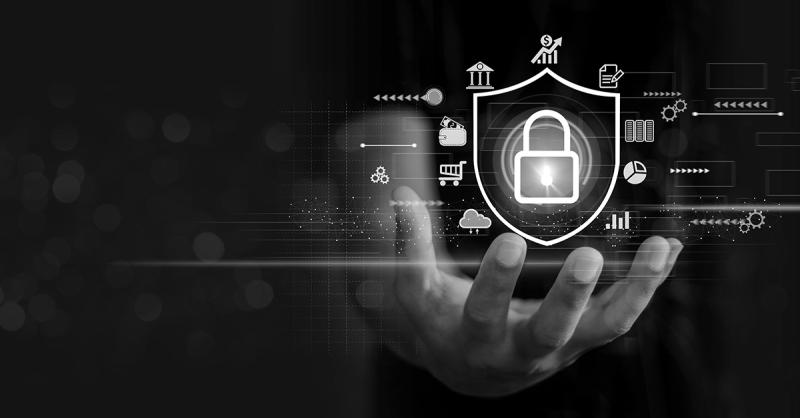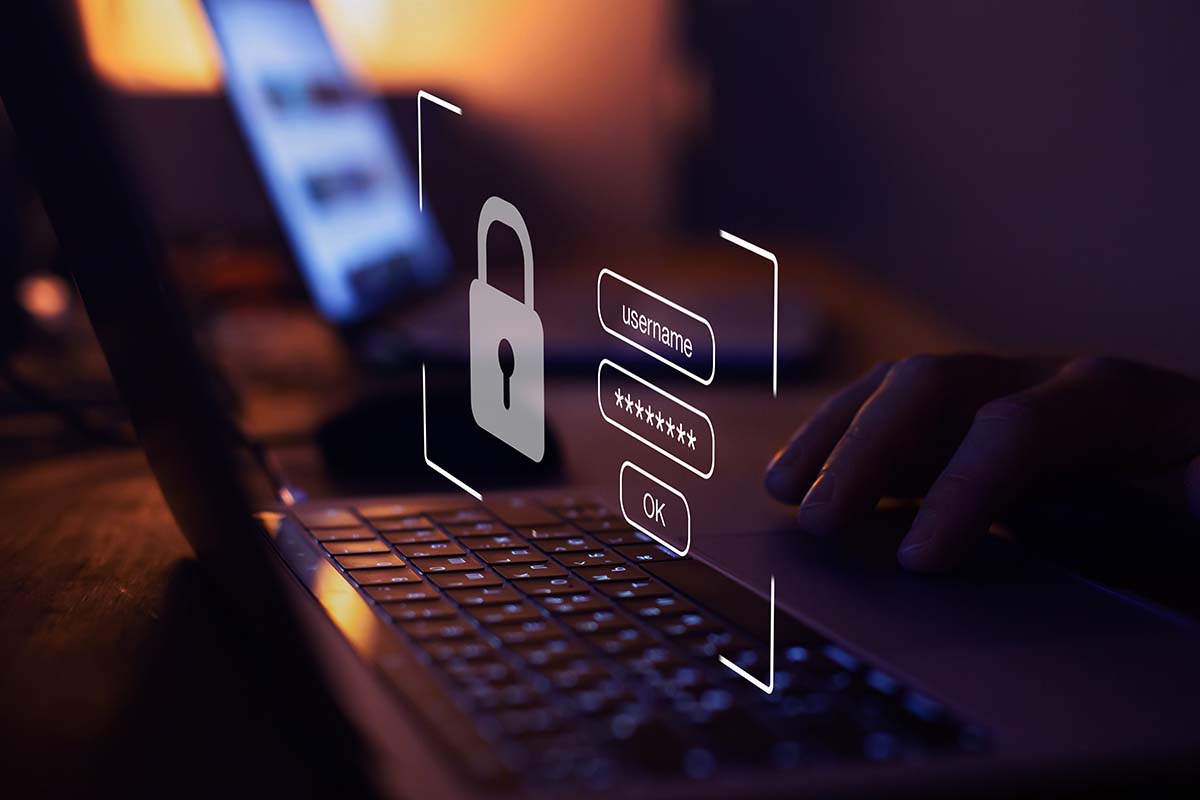Making Cybersecurity a Core Priority for Your Business 2024
In today’s world, the risk of cyber attacks is very real for businesses. They can cause huge financial damage. IBM says each cyber attack could cost about $4.35 million by 2023.
This shows why cybersecurity is so crucial, protecting both data and finances.
But, are you protecting your business from cyber threats? We’ll look at key strategies to enhance network security, boost cyber resilience, and meet regulatory compliance in 2024 and beyond.
Read More: What is Cybersecurity? Types, Threats, and Cyber Safety Tips
Key Takeaways:
- Cybersecurity must be a top focus to safeguard data and prevent big financial hits.
- It’s key to have strong network security and good data protection strategies.
- Creating a cybersecurity awareness culture and a solid incident response plan will improve cyber resilience.
- Following regulatory requirements and doing frequent vulnerability assessments lowers cyber risks.
- Using ethical hacking and good secure software practices improves overall security.
The Evolving Role of CISOs and Cybersecurity
The role of a CISO, or Chief Information Security Officer, is changing. They are now seen as partners in managing daily business needs. This is instead of only being called in to help during crises. The KPMG report for 2024 lists eight key areas CISOs should focus on. These include reducing risks, growing the business, and increasing resilience.
Read More: What is the main role of cyber security?
Strategic Pragmatism for Technology Innovations
CISOs must balance new technology with strong security. They are adopting a wise, practical approach. This includes putting money into technology that helps manage risks. It ensures that every part of the digital world is secure.
From Crisis Management to Business Enablement
The CISO’s job is becoming more about enabling business than just crisis management. They now work closely with other top executives. Together, they set out to manage cyber risks and build stronger cyber defenses. They make sure protections and practices are a part of everything the business does.
Read more: Different Types of Cyber Security: A Comprehensive Guide
Federated Cybersecurity Model
The cyber world is complex, and we rely more on cloud tech. This has led to a team effort in cybersecurity. CISOs work with others, like CIOs, CROs, and CCOs, to make a better security plan. This big team ensures everyone follows the same security rules. It helps make sure that all employees are aware and prepared.
Strengthening the Bond Between Cybersecurity and ESG
Organizations are working hard to be good for the world. They see that linking cybersecurity with being environmentally friendly, social, and having strong governance matters a lot. People who buy, work for, or supply these companies want more than growth and profit. They want these businesses to be good to the world, too. So, companies need to connect how they keep things safe with caring for the planet and their people.
Incorporating Cybersecurity into ESG Factors
Cybersecurity is vital in a company’s plan to be better for the world. Both strong data protection strategies and keeping the network safe are key. If businesses want to score well on how they do in these areas, they must keep their data safe. It means they should teach their employees well about cybersecurity and be ready to act if anything goes wrong.
Transparency and Measuring Cybersecurity Performance
Those who rate a company’s efforts to be good want to see how well they teach their staff about security and what they do if something bad happens. So, businesses must show they do things the right way. They need to be good at stopping hackers and fixing problems quickly. This makes sure the company is trusted by those who care about being responsible.
Today, how companies deal with cyber threats is as important as being good in other ways. So, companies must always be ready for problems, teach their teams well about security, and check their systems often. Doing these things shows they are serious about keeping data safe and following the rules.
Navigating Complex Cyber and Privacy Regulations
Today’s global business scene is packed with cyber and privacy rules. Companies face a mix of laws because of different country interests. These include rules on keeping information safe, ensuring the safety of what’s bought, and showing how they stay safe online.
Companies have to follow these different rules wisely. They also need to keep their business secure in each place they operate.
Information Sovereignty and Supply Chain Security
National interests and digital areas sometimes clash today. Companies must protect important data and systems. They need to watch out for cyber risks from everyone they work with. This helps them comply with rules and keep their business strong.
Incident Reporting and Privacy Requirements
Telling the truth when things go wrong and keeping privacy promises are now key for big businesses worldwide. They should be ready to handle big cyber problems fast. But, they also need to keep customer and worker info safe. This is according to laws like GDPR, HIPAA, and CCPA.
Adapting to Changing Geopolitics and Sanctions
The world’s politics often change quickly, and this affects how businesses operate. Staying alert is a must. Having quick and flexible security is important, too. Working closely with those who set the rules can also make things smoother.
Making Cybersecurity a Core Priority
ARK Solvers, a top cybersecurity solutions provider, believes cybersecurity is strategic, and needs C-level oversight. Enterprises must invest in their OT infrastructure. This investment should aim to improve cyber threat prevention, data protection, and network security best practices.
Prioritizing Cybersecurity as a Strategic Issue
Focusing on cybersecurity strategically adds growth and resilience. It gives better visibility into OT assets and improves security controls. Thus, companies can detect and respond to cyber threats quickly. This reduces risks related to cyber threat prevention, data protection, and network security best practices.
Establishing Robust OT Network Infrastructure
Building a strong OT network is key for cybersecurity risk management, cyber resilience, and cybersecurity compliance. Businesses should enhance cybersecurity awareness training and set up a solid cyber incident response plan. This protects critical data protection and network security assets against threats.
Continuous Monitoring and Incident Response
Good risk management and security awareness training are vital, facing constantly changing vulnerability assessments and regulatory compliance needs. Companies need to use ethical hacking and strong network security measures to find and reduce risks within their networks.
Collaborative Defense and Information-Sharing
Encouraging a culture of compliance with regulations, secure software development practices, and cloud security considerations is vital. This builds cyber risk management and threat intelligence capabilities. Employing cybersecurity best practices, including advanced security measures, helps prevent data breaches and reduce cyber threat mitigation.
To make cybersecurity a top priority, companies need broad strategies. They should focus on network security strategies, data protection measures, and proactive security measures. A comprehensive risk management framework is essential. This helps companies navigate through changing cyber threats, incident response scenarios, and security awareness needs.
Cyber Resilience: Aligning Security and Resilience
In our world today, the threat of cyber attacks is on the rise. So, companies are realizing they need to merge their security and resilience plans. ARK Solvers points out that quick responses are vital. They say organizations must act within minutes or hours, not days or weeks when facing a cyber crisis.
Protecting, Detecting, and Rapid Response
To fight cyber threats, we need more than the old security methods. We must be ready to defend against attacks, spot them quickly, and react fast to limit the harm. Over half of businesses are spending more on cyber protection after attacks. They are choosing to be ready by putting in place strong defenses for their data and systems.
Maintaining Operational Capabilities
Some fields, like energy and communications, can’t afford to stop working. Their leaders are concentrating on keeping things going, even if their first security layers fall. By using tools like the Cyber Resilience Review and the NIST Cybersecurity Framework, companies are improving how they handle cyber threats. This helps them bounce back faster and face less damage to their money and name.
Reducing the Impact of Future Attacks
Saving against cyber risks isn’t just about stopping attacks. It’s also about being ready and having a plan if one happens. Plus, it’s about keeping business running, making people trust you, and following the rules. By looking hard at risks, getting ready to act when needed, teaching staff how to stay safe online, and testing plans often, companies can stand stronger against upcoming cyber shocks. Estimates say these safety measures could save the world’s economy a lot of money by 2023.
In today’s ever-changing cyber threat scene, blending security with resilience is key. It helps keep important things safe, ensures work goes on, and makes businesses tough enough to weather any storm.
Automating Threat Detection and Response
Businesses are speeding up their move towards digital transformation. This change makes the attack surface larger. Companies are putting more of their systems in the cloud and dealing with more data. But, this also brings more alerts and wrong signals. Having to deal with all these signals is a big problem for security operation centers (SOCs).
Read More: Exploring the Various Types of Cyber Security Threats
Expanding Attack Surface and Alert Fatigue
Moving to the cloud and working remotely have made the attack surface bigger. This means there are more alerts to check. But, a lot of these are false alarms, causing alert fatigue for those looking out for real threats. Finding the actual dangers quickly is hard without the right tools.
Leveraging Automation for Rapid Response
So, leaders in cybersecurity are now using automation and artificial intelligence (AI). This helps them deal with the flood of alerts. Automated systems can look at huge amounts of data fast. They can find and fix problems better and quicker than humans. Using these tools means responding to threats faster and better.
Collecting, Correlating, and Escalating Signals
Good automated threat detection and response needs a full plan. It’s not just about watching for problems. Systems need to gather and check signals from all over, find what’s important in real-time, and act fast on the serious ones. A strategy that involves “collect, correlate, and escalate” helps companies be stronger against future threats.
ARK Solvers is at the front, offering tools for automating threat detection and response. Their platform uses top AI and machine learning. It quickly looks at security alerts, helping teams act fast and with high accuracy against threats.
Read More: How is AI used in cyber security?
Conclusion
Cybersecurity is vital for businesses in the U.S. As technology progresses, so do cyber threats. These include ransomware, phishing, and APTs. Companies, including ARK Solvers, need to make cybersecurity a top priority. This is to protect their information, operations, and image.
A proactive and comprehensive cybersecurity approach is necessary. Chief Information Security Officers (CISOs) are key. It’s also important to blend cybersecurity with areas like ESG. Companies need to keep up with new regulations and have strong response and detection plans in place. Using automated tools and working together will help tackle threats effectively.
The fight against cyber threats is ongoing. Businesses must be ready and adaptable. By focusing on cybersecurity, companies like ARK Solvers can improve their security. This not only lowers the risk of breaches but also sets them up for success in the digital world.
FAQ
What is the estimated financial impact of cyber attacks on businesses by 2023?
IBM predicts that by 2023, each cyber attack will cost a business around $4.35 million. On average, victims are losing about $812,360 per attack. This shows how ransomware is hitting businesses hard financially.
How is the role of the Chief Information Security Officer (CISO) evolving?
The CISO’s role is shifting. Now, they are becoming partners who work proactively to meet ongoing business needs. Before, they were mainly crisis rescuers.
What are the key considerations that CISOs should prioritize in 2024 to mitigate risk, drive business growth, and build resilience?
The KPMG report highlights eight key areas for CISOs to focus on in 2024. These priorities will help reduce risk, spur business growth, and strengthen resilience.
How can organizations strengthen the connection between security, privacy, and environmental, social, and governance (ESG) factors?
Organizations can connect security, privacy, and ESG factors by acting responsibly. There’s a growing focus on this connection within the business world. ESG rating services are looking for better transparency from organizations.
What are the key challenges businesses face in navigating the complex cyber and privacy regulatory space?
Navigating cyber and privacy regulations is tough for businesses. They face different rules on data control and sharing, cyber policy transparency, and privacy. They need to report in a global context while keeping up with local security needs.
Why should cybersecurity be viewed as a strategic issue with a C-level executive taking responsibility?
Seeing cybersecurity as strategic with C-level responsibility is vital. It means investing in better OT network support for growth and resilience. Enhanced security in production lines and quick threat response are crucial.
What is the importance of having a response plan measured in minutes and hours during a cyber incident?
Quick response during a cyber incident is key—minutes and hours, not days or weeks. In a fast-changing world, being resilient is crucial. This means focusing on recovery if initial defenses fall short.
How is the expanding cyberattack surface creating challenges for CISOs?
The shift to the cloud and more remote work is growing the cyberattack surface. CISOs are facing more alerts and events to sort through. This leads to security centers being overwhelmed.






